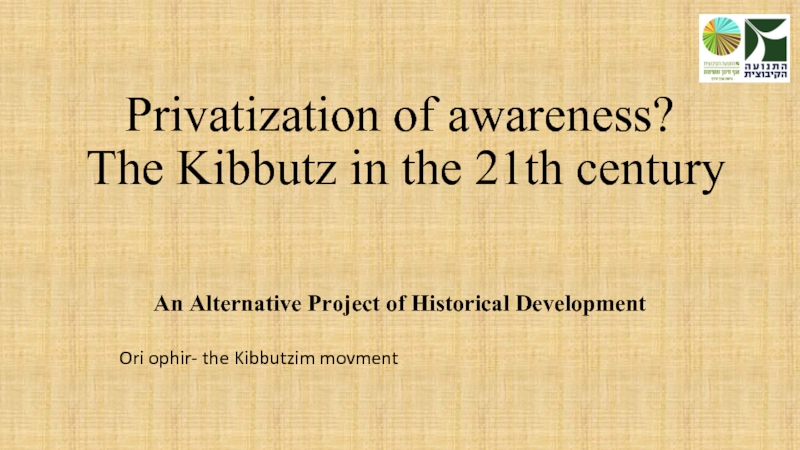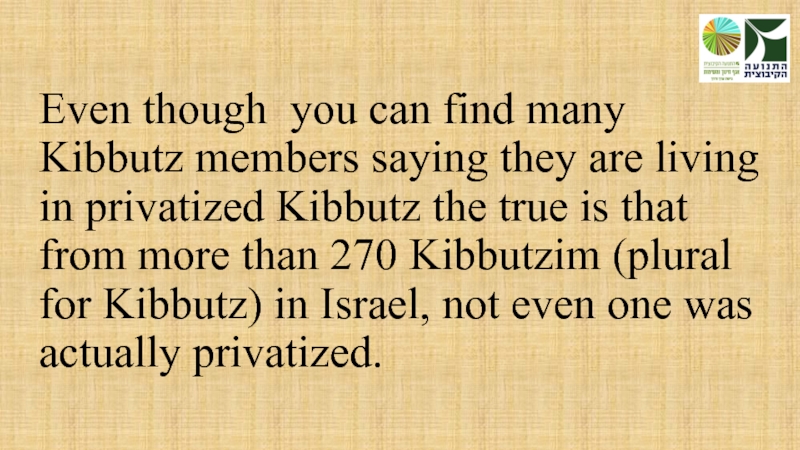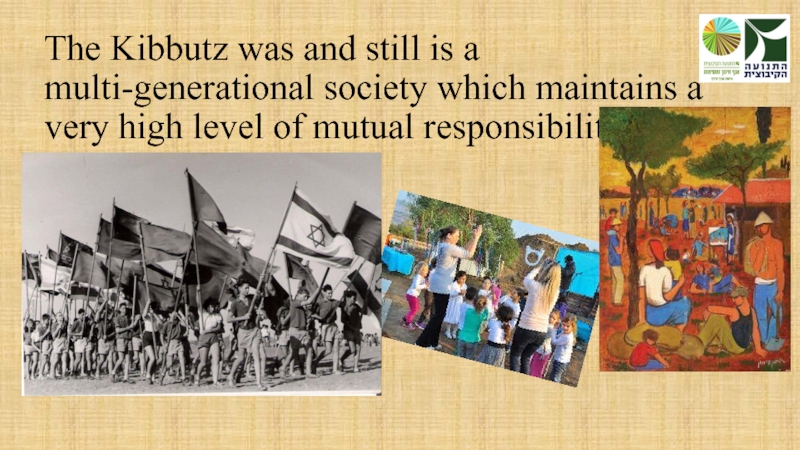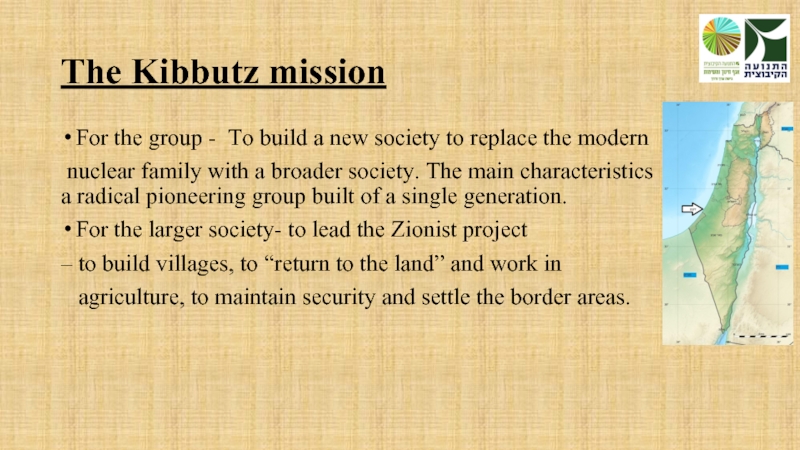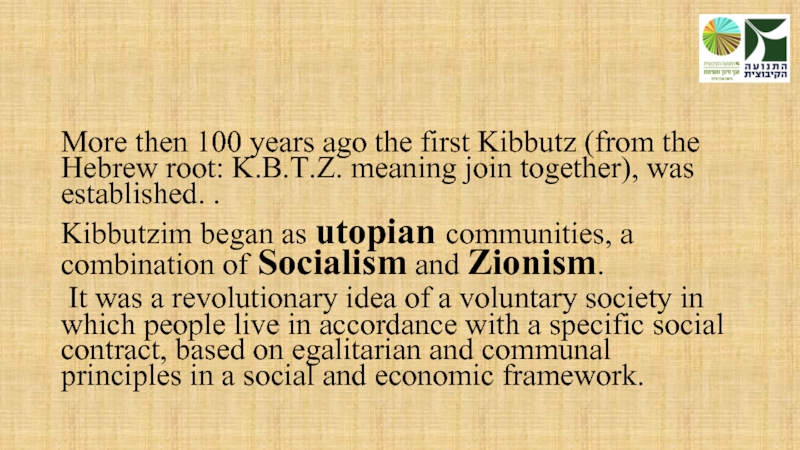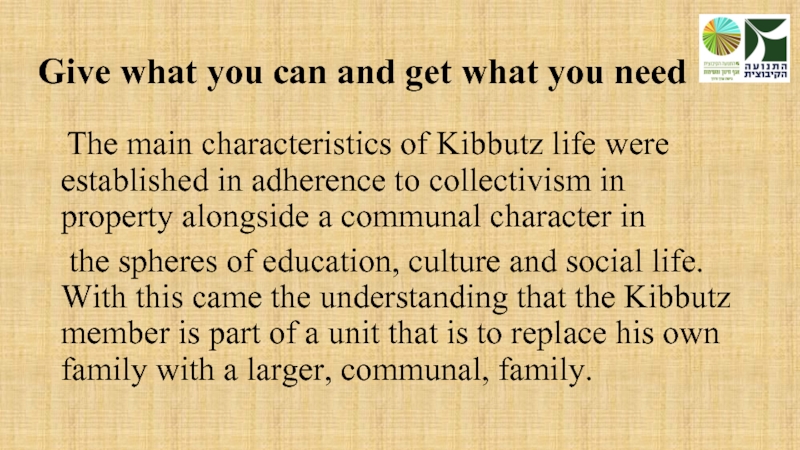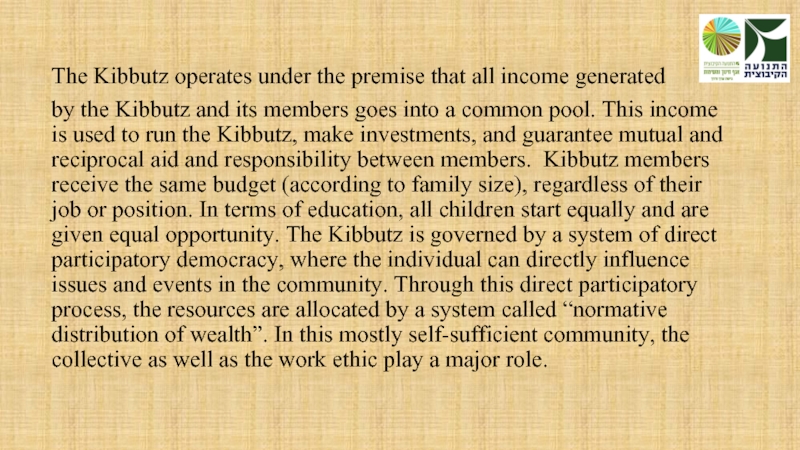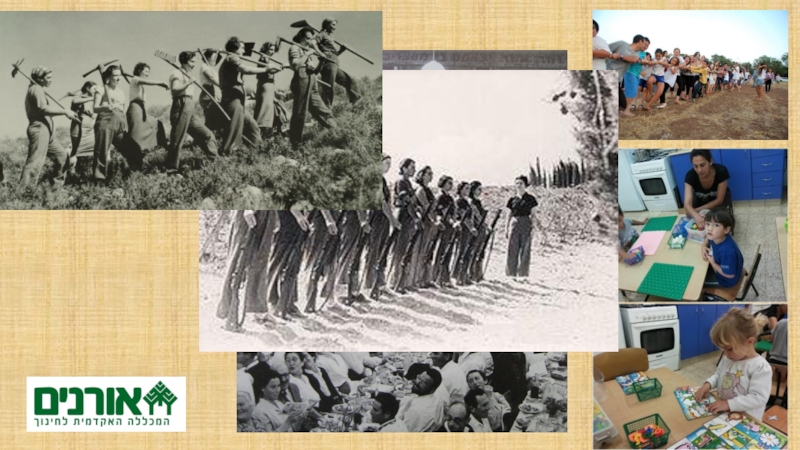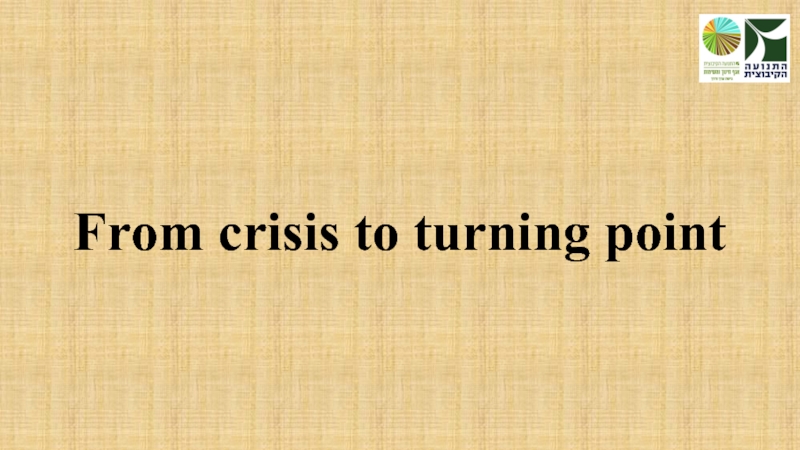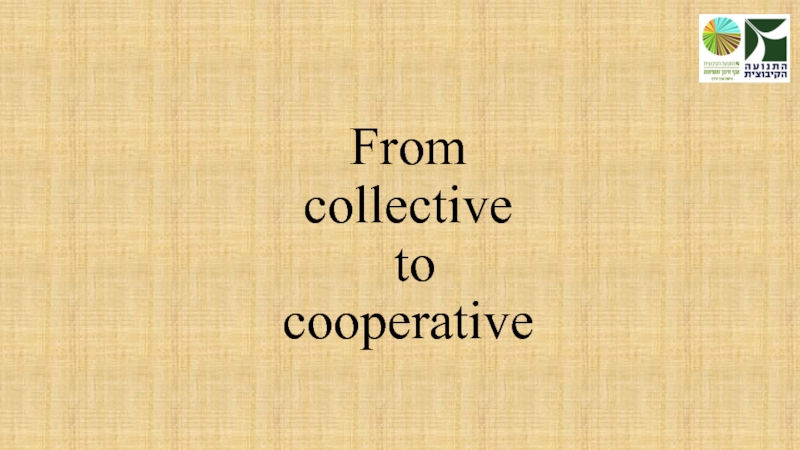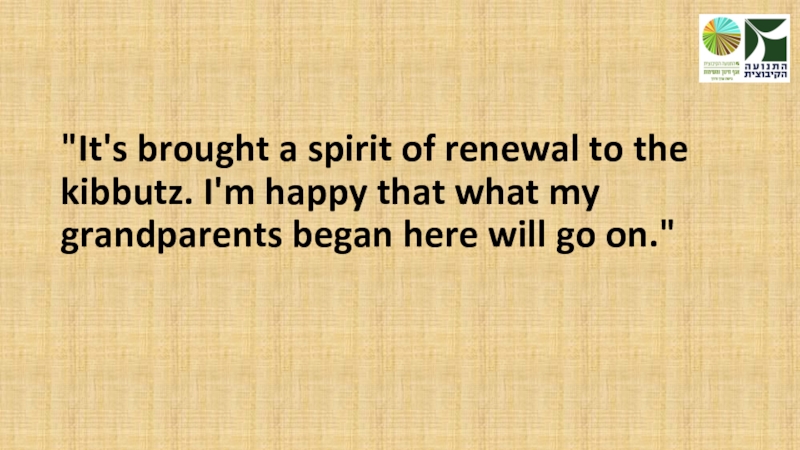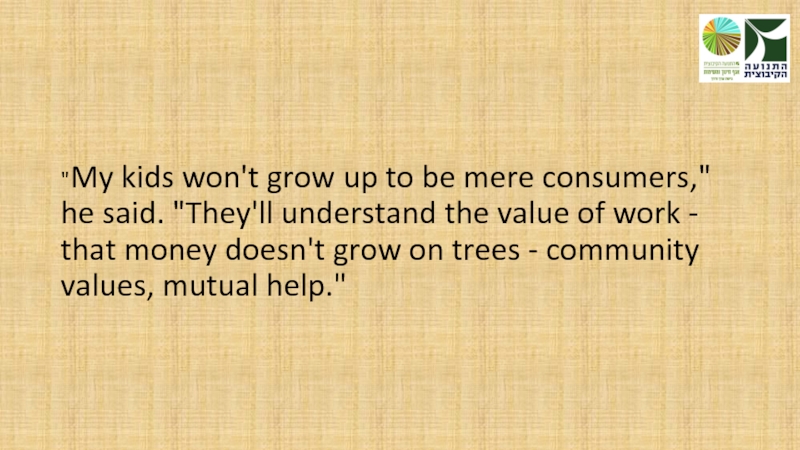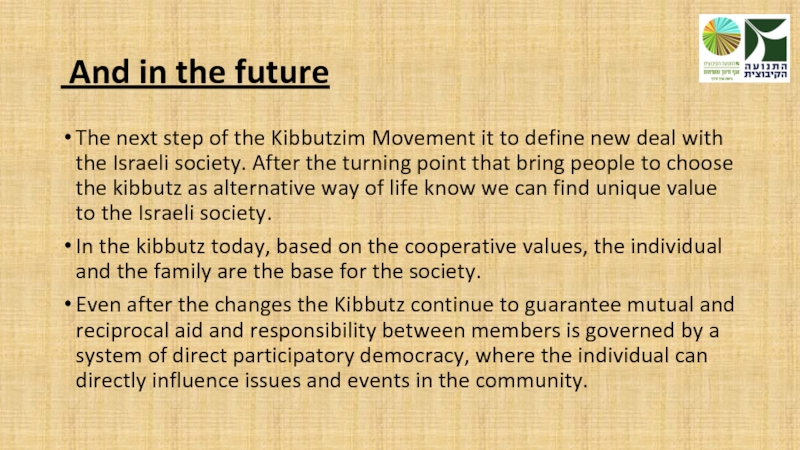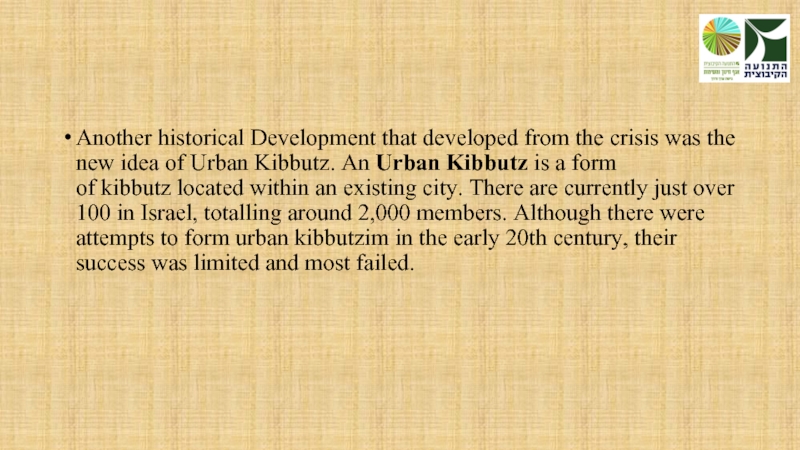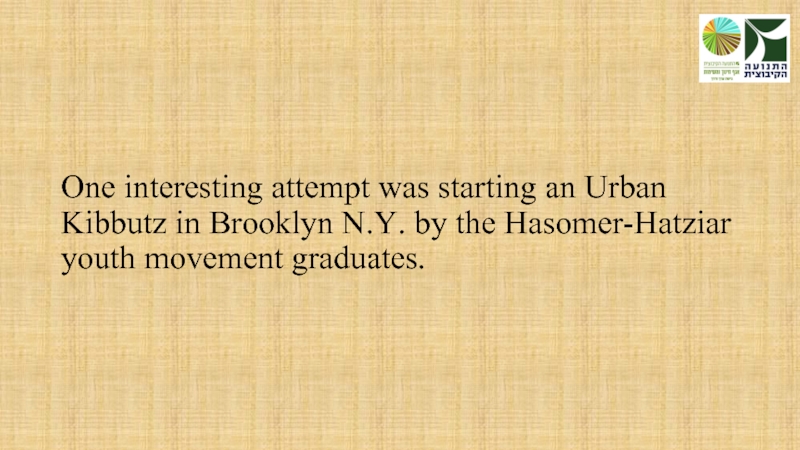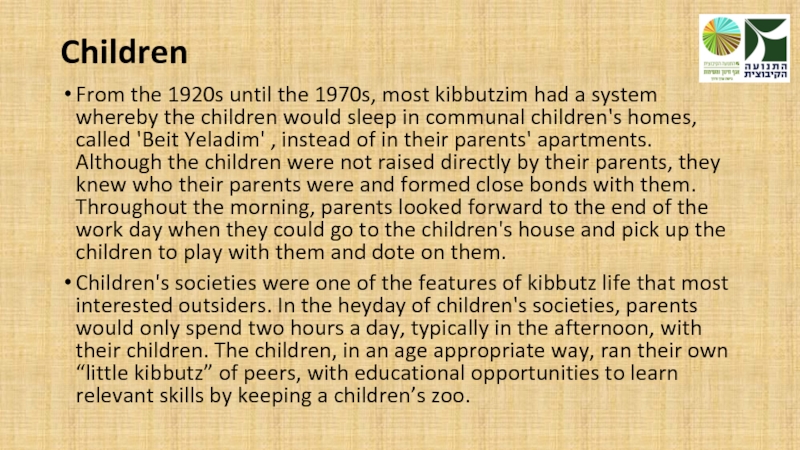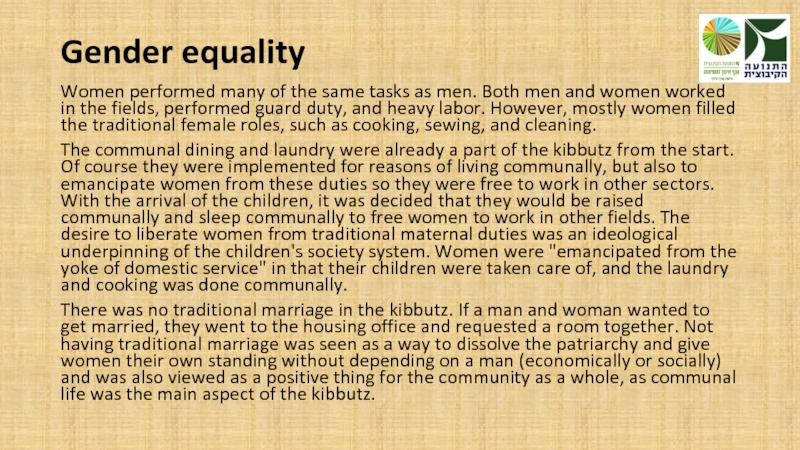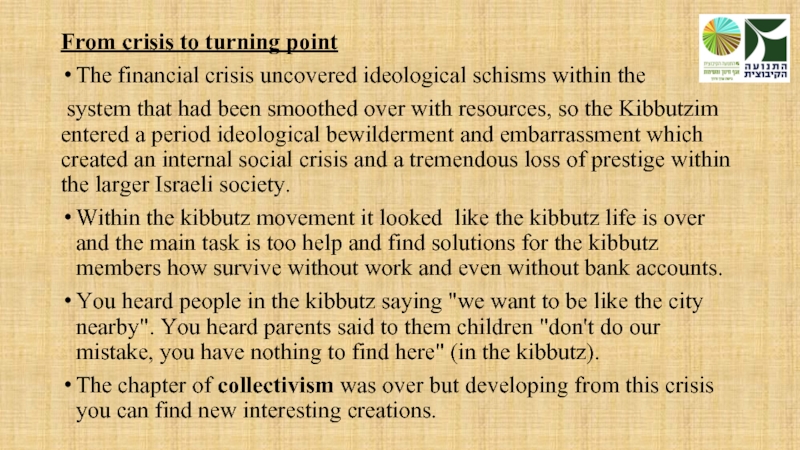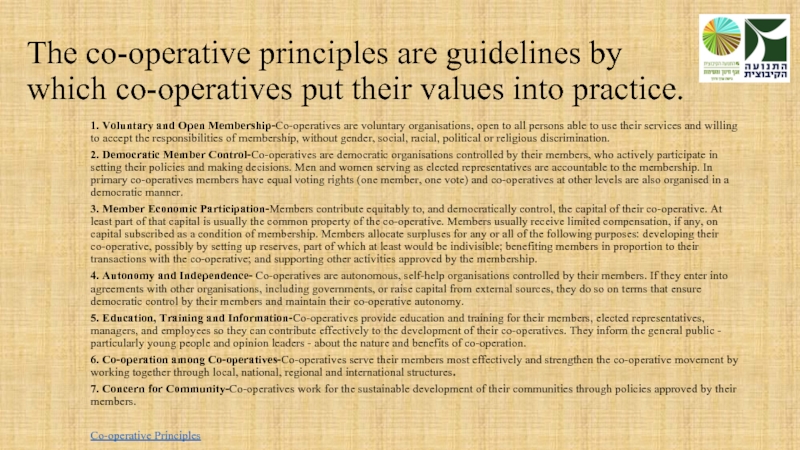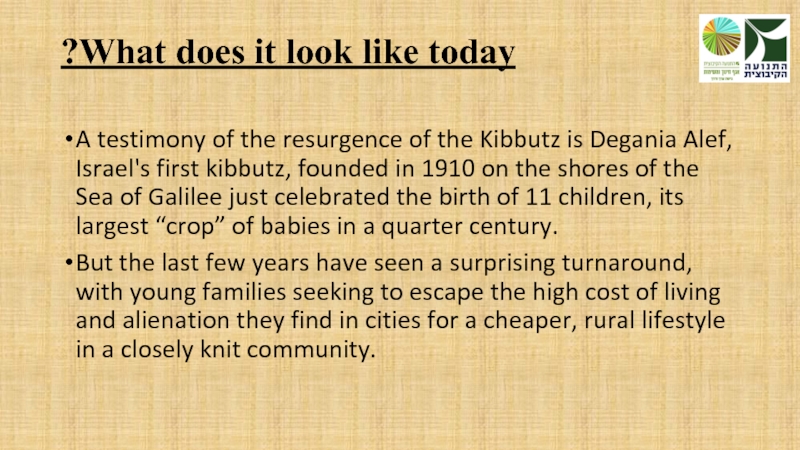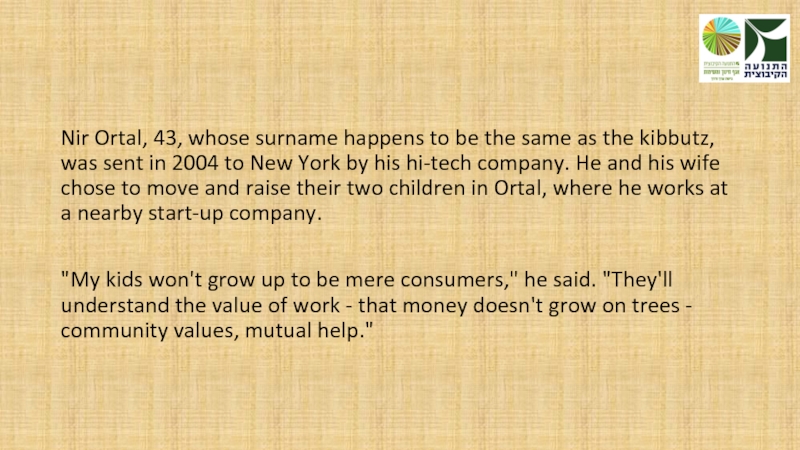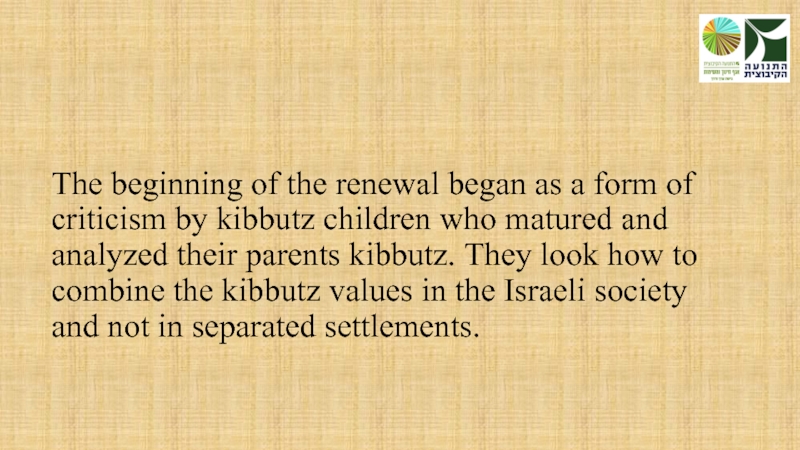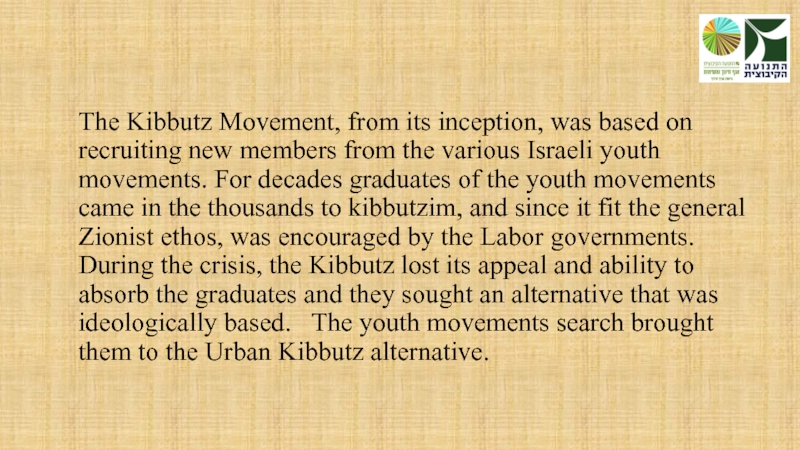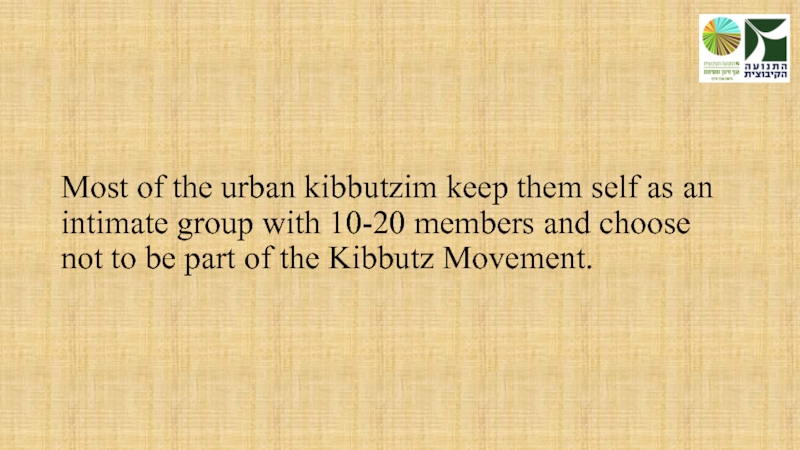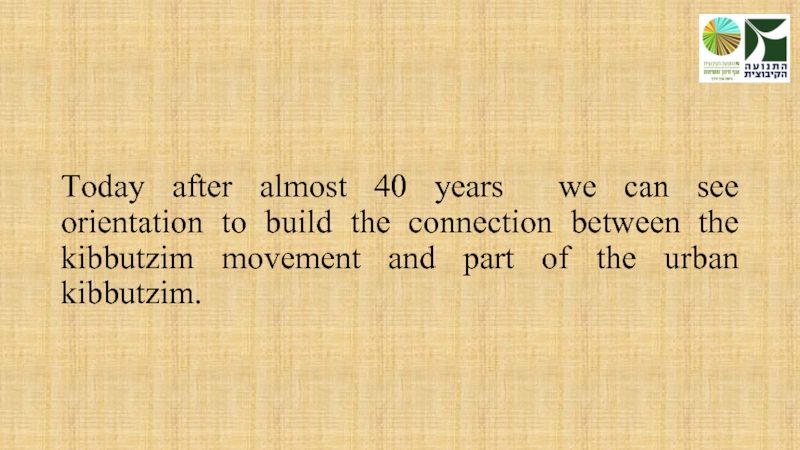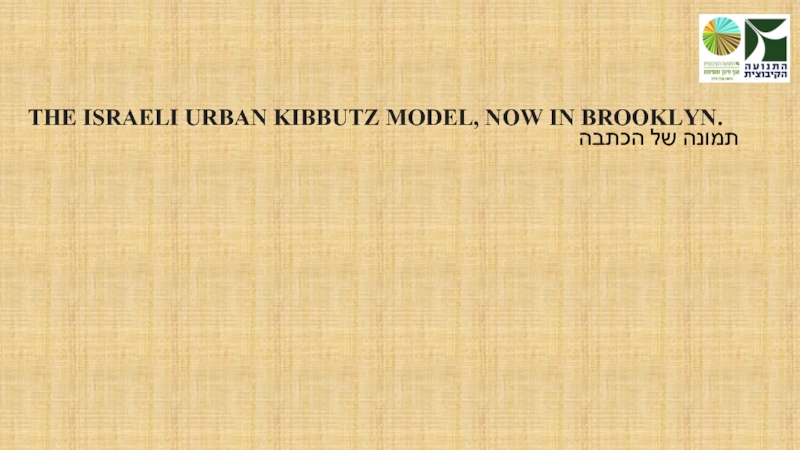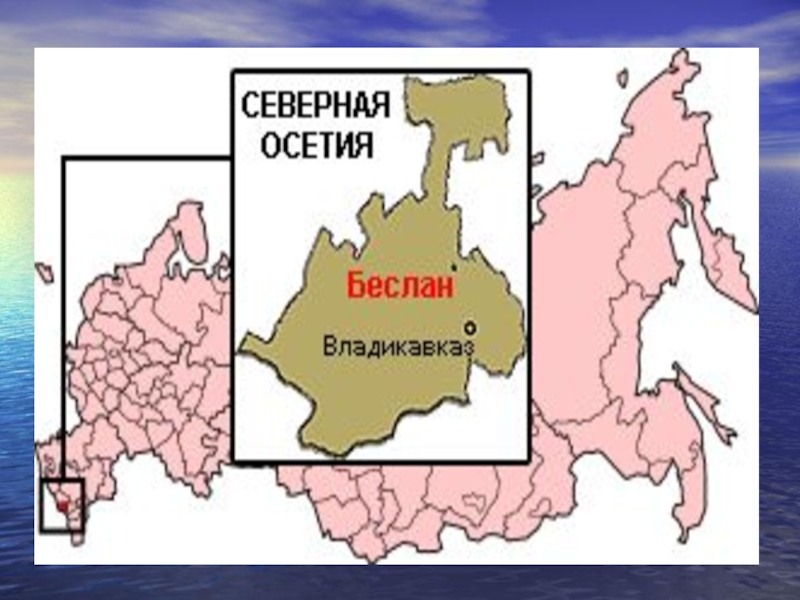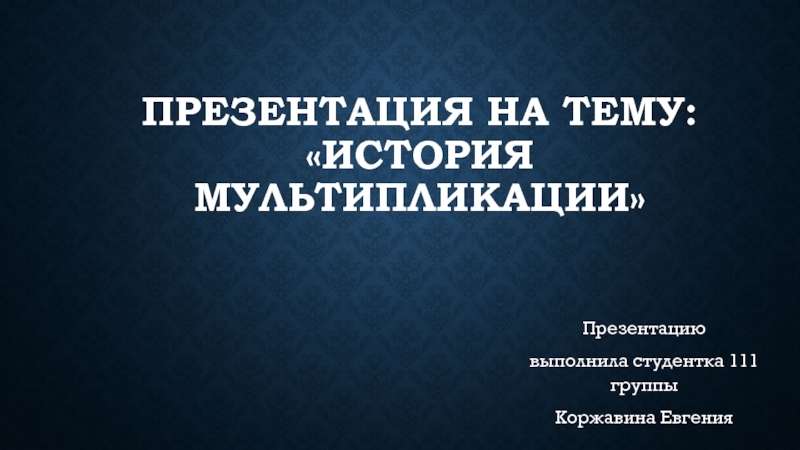Ori ophir- the Kibbutzim movment
- Главная
- Разное
- Дизайн
- Бизнес и предпринимательство
- Аналитика
- Образование
- Развлечения
- Красота и здоровье
- Финансы
- Государство
- Путешествия
- Спорт
- Недвижимость
- Армия
- Графика
- Культурология
- Еда и кулинария
- Лингвистика
- Английский язык
- Астрономия
- Алгебра
- Биология
- География
- Детские презентации
- Информатика
- История
- Литература
- Маркетинг
- Математика
- Медицина
- Менеджмент
- Музыка
- МХК
- Немецкий язык
- ОБЖ
- Обществознание
- Окружающий мир
- Педагогика
- Русский язык
- Технология
- Физика
- Философия
- Химия
- Шаблоны, картинки для презентаций
- Экология
- Экономика
- Юриспруденция
Privatization of awareness? The Kibbutz in the 21th century презентация
Содержание
- 1. Privatization of awareness? The Kibbutz in the 21th century
- 2. Even though you can find many Kibbutz
- 3. The Kibbutz was and still is a
- 4. The Kibbutz mission For the group -
- 5. More then 100 years ago the
- 6. Give what you can and get what
- 7. The Kibbutz operates under the premise that
- 8. New family Children Gender equality
- 9. From crisis to turning point
- 10. From collective to cooperative
- 11. What does it look like today?
- 12. "It's brought a spirit of renewal
- 13. "My kids won't grow up
- 14. And in the future The next
- 15. Another historical Development that developed from
- 16. One interesting attempt was starting an Urban
- 17. Children From the 1920s until the
- 18. Gender equality Women performed many of
- 19. From crisis to turning point The
- 20. From crisis to turning point The
- 21. The co-operative principles are guidelines by which
- 22. What does it look like today?
- 23. Nir Ortal, 43, whose surname happens
- 24. The beginning of the renewal began as
- 25. The Kibbutz Movement, from its inception, was
- 26. Most of the urban kibbutzim keep them
- 27. Today after almost 40 years we can
- 28. THE ISRAELI URBAN KIBBUTZ MODEL, NOW IN BROOKLYN. תמונה של הכתבה
Слайд 1Privatization of awareness?
The Kibbutz in the 21th century
An Alternative Project
Слайд 2Even though you can find many Kibbutz members saying they are
Слайд 3The Kibbutz was and still is a multi-generational society which maintains
Слайд 4The Kibbutz mission
For the group - To build a new society
nuclear family with a broader society. The main characteristics a radical pioneering group built of a single generation.
For the larger society- to lead the Zionist project
– to build villages, to “return to the land” and work in
agriculture, to maintain security and settle the border areas.
Слайд 5
More then 100 years ago the first Kibbutz (from the Hebrew
Kibbutzim began as utopian communities, a combination of Socialism and Zionism.
It was a revolutionary idea of a voluntary society in which people live in accordance with a specific social contract, based on egalitarian and communal principles in a social and economic framework.
Слайд 6Give what you can and get what you need
The main characteristics
the spheres of education, culture and social life. With this came the understanding that the Kibbutz member is part of a unit that is to replace his own family with a larger, communal, family.
Слайд 7The Kibbutz operates under the premise that all income generated
by
Слайд 12
"It's brought a spirit of renewal to the kibbutz. I'm happy
Слайд 13
"My kids won't grow up to be mere consumers," he said.
Слайд 14 And in the future
The next step of the Kibbutzim Movement
In the kibbutz today, based on the cooperative values, the individual and the family are the base for the society.
Even after the changes the Kibbutz continue to guarantee mutual and reciprocal aid and responsibility between members is governed by a system of direct participatory democracy, where the individual can directly influence issues and events in the community.
Слайд 15
Another historical Development that developed from the crisis was the new
Слайд 16One interesting attempt was starting an Urban Kibbutz in Brooklyn N.Y.
Слайд 17Children
From the 1920s until the 1970s, most kibbutzim had a system
Children's societies were one of the features of kibbutz life that most interested outsiders. In the heyday of children's societies, parents would only spend two hours a day, typically in the afternoon, with their children. The children, in an age appropriate way, ran their own “little kibbutz” of peers, with educational opportunities to learn relevant skills by keeping a children’s zoo.
Слайд 18Gender equality
Women performed many of the same tasks as men. Both
The communal dining and laundry were already a part of the kibbutz from the start. Of course they were implemented for reasons of living communally, but also to emancipate women from these duties so they were free to work in other sectors. With the arrival of the children, it was decided that they would be raised communally and sleep communally to free women to work in other fields. The desire to liberate women from traditional maternal duties was an ideological underpinning of the children's society system. Women were "emancipated from the yoke of domestic service" in that their children were taken care of, and the laundry and cooking was done communally.
There was no traditional marriage in the kibbutz. If a man and woman wanted to get married, they went to the housing office and requested a room together. Not having traditional marriage was seen as a way to dissolve the patriarchy and give women their own standing without depending on a man (economically or socially) and was also viewed as a positive thing for the community as a whole, as communal life was the main aspect of the kibbutz.
Слайд 19From crisis to turning point
The individual member: A Kibbutz member identified
After long process, the young leadership in the individual kibbutzim and the Kibbutz Movement, focused on this need, and developed varied approached and methodologies which tried to give answers to the kibbutz members needs for self-determination.
The main course is to be part of the cooperative world, to adopt similar values and to see the Kibbutz today as a part of alternative way of life. The ability of the movement and the leadership in the Kibbutzim to say "We have something to offer ourselves, our children and Israeli society”
Слайд 20
From crisis to turning point
The financial crisis uncovered ideological schisms within
system that had been smoothed over with resources, so the Kibbutzim entered a period ideological bewilderment and embarrassment which created an internal social crisis and a tremendous loss of prestige within the larger Israeli society.
Within the kibbutz movement it looked like the kibbutz life is over and the main task is too help and find solutions for the kibbutz members how survive without work and even without bank accounts.
You heard people in the kibbutz saying "we want to be like the city nearby". You heard parents said to them children "don't do our mistake, you have nothing to find here" (in the kibbutz).
The chapter of collectivism was over but developing from this crisis you can find new interesting creations.
Слайд 21The co-operative principles are guidelines by which co-operatives put their values
1. Voluntary and Open Membership-Co-operatives are voluntary organisations, open to all persons able to use their services and willing to accept the responsibilities of membership, without gender, social, racial, political or religious discrimination.
2. Democratic Member Control-Co-operatives are democratic organisations controlled by their members, who actively participate in setting their policies and making decisions. Men and women serving as elected representatives are accountable to the membership. In primary co-operatives members have equal voting rights (one member, one vote) and co-operatives at other levels are also organised in a democratic manner.
3. Member Economic Participation-Members contribute equitably to, and democratically control, the capital of their co-operative. At least part of that capital is usually the common property of the co-operative. Members usually receive limited compensation, if any, on capital subscribed as a condition of membership. Members allocate surpluses for any or all of the following purposes: developing their co-operative, possibly by setting up reserves, part of which at least would be indivisible; benefiting members in proportion to their transactions with the co-operative; and supporting other activities approved by the membership.
4. Autonomy and Independence- Co-operatives are autonomous, self-help organisations controlled by their members. If they enter into agreements with other organisations, including governments, or raise capital from external sources, they do so on terms that ensure democratic control by their members and maintain their co-operative autonomy.
5. Education, Training and Information-Co-operatives provide education and training for their members, elected representatives, managers, and employees so they can contribute effectively to the development of their co-operatives. They inform the general public - particularly young people and opinion leaders - about the nature and benefits of co-operation.
6. Co-operation among Co-operatives-Co-operatives serve their members most effectively and strengthen the co-operative movement by working together through local, national, regional and international structures.
7. Concern for Community-Co-operatives work for the sustainable development of their communities through policies approved by their members.
Co-operative Principles
Слайд 22What does it look like today?
A testimony of the resurgence of
But the last few years have seen a surprising turnaround, with young families seeking to escape the high cost of living and alienation they find in cities for a cheaper, rural lifestyle in a closely knit community.
Слайд 23
Nir Ortal, 43, whose surname happens to be the same as
"My kids won't grow up to be mere consumers," he said. "They'll understand the value of work - that money doesn't grow on trees - community values, mutual help."
Слайд 24The beginning of the renewal began as a form of criticism
Слайд 25The Kibbutz Movement, from its inception, was based on recruiting new
Слайд 26Most of the urban kibbutzim keep them self as an intimate
Слайд 27Today after almost 40 years we can see orientation to build
